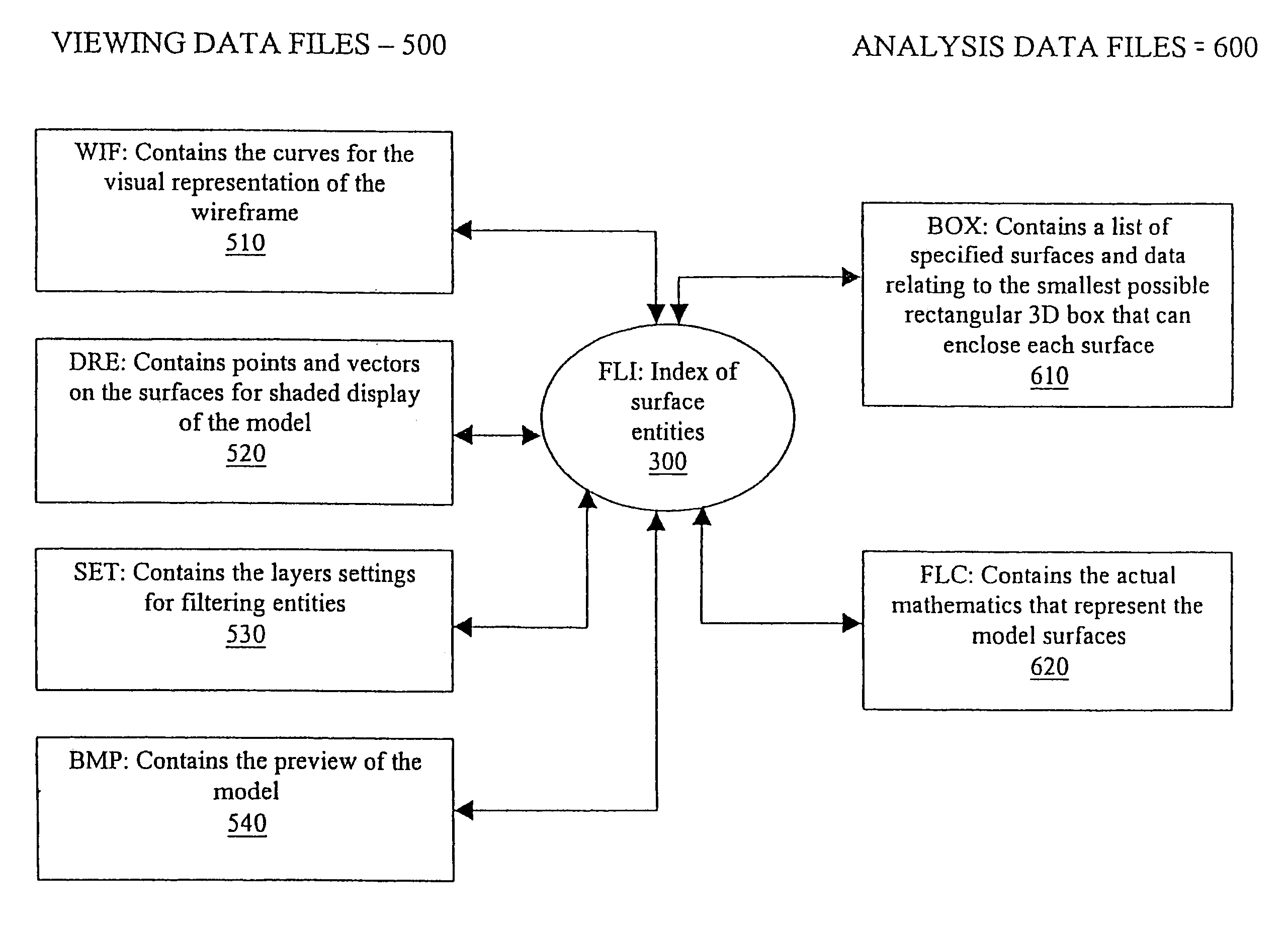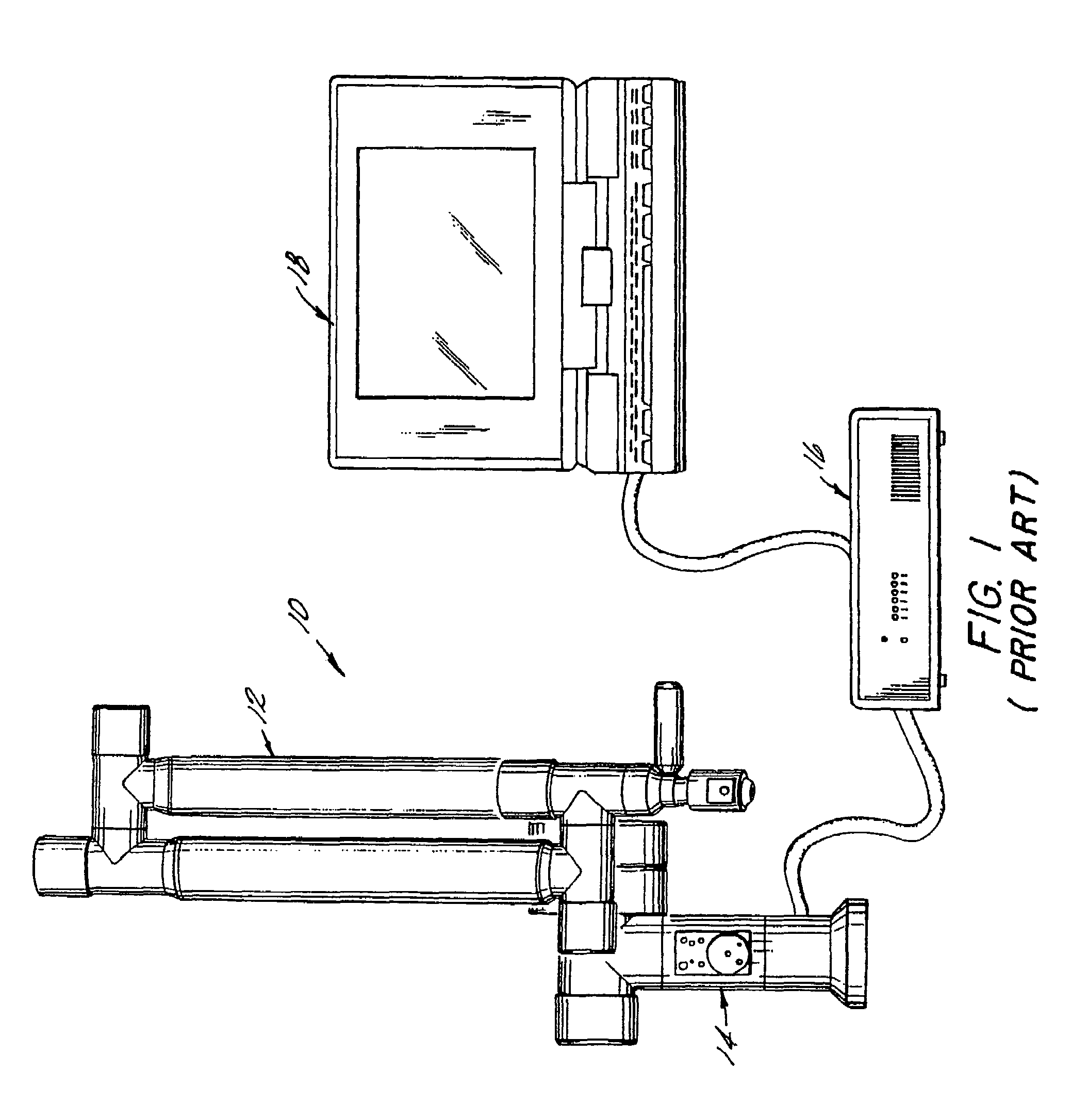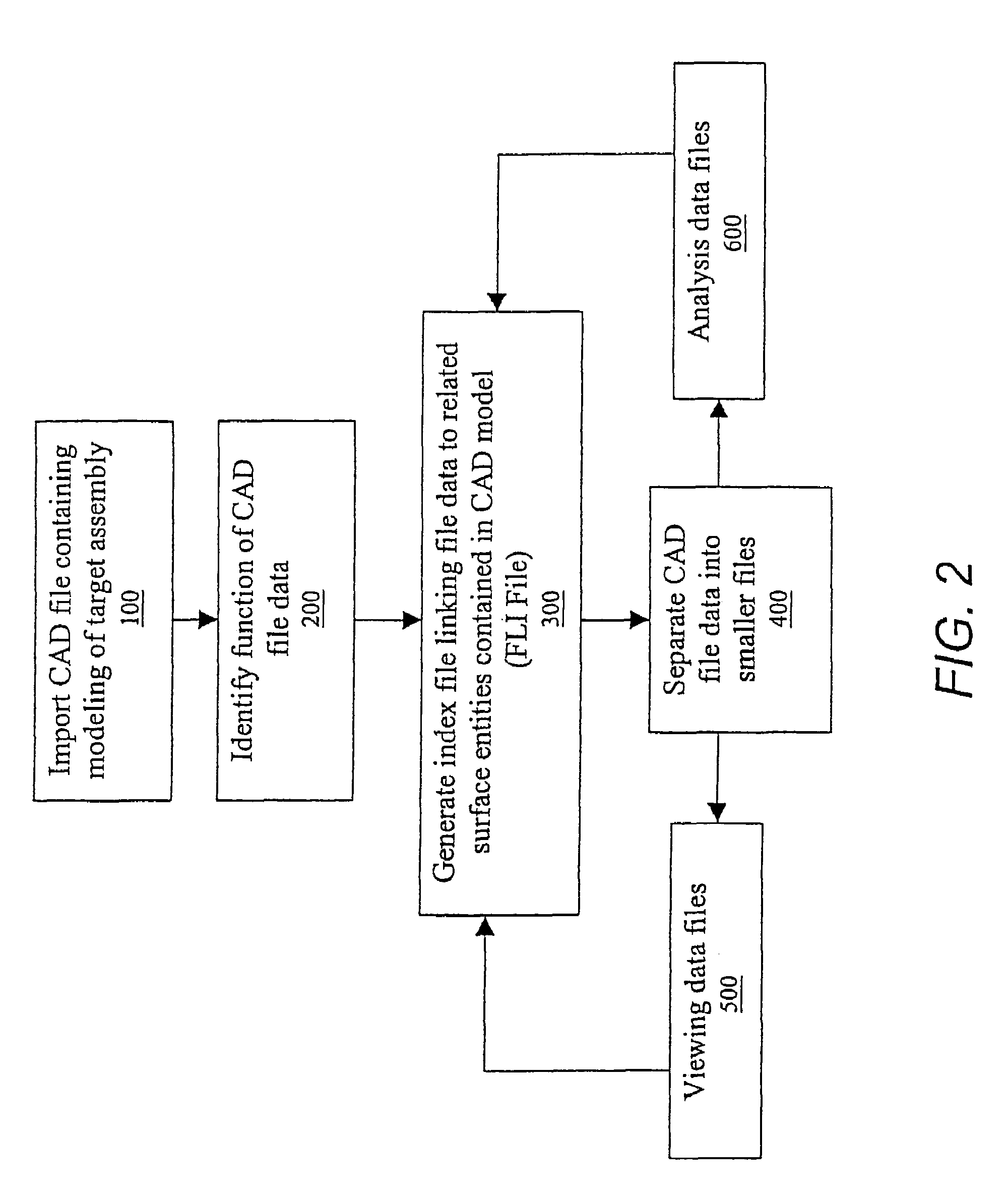Method and system for computer aided manufacturing measurement analysis
a technology analysis system, applied in the field of computer aided manufacturing measurement (cam2) analysis, can solve the problems of time-consuming, limited in size, scope and effectiveness of the measurement and quality inspection function in the manufacturing process, and something important was missing from the production cycle, so as to facilitate the quality control of manufactured assemblies, and reduce the difficulty of manufacturing
- Summary
- Abstract
- Description
- Claims
- Application Information
AI Technical Summary
Benefits of technology
Problems solved by technology
Method used
Image
Examples
Embodiment Construction
[0019]FIG. 2 is a diagram of the method of managing a large CAD file in one embodiment. The method may be a computer-implemented process in which a microprocessor executes steps in response to a computer program contained in a storage medium. In an exemplary embodiment, the host computer executes the process. Alternatively, a less sophisticated arm-based controller may execute the program as described in U.S. Pat. No. 5,978,748. As shown, a user initiates the process by importing a large CAD file containing a model of an identified assembly at 100. Standard CAD files contain a large number of layers that each includes large stores of information that, while important to the design phase of the model, are not entirely relevant to CAM2. The large CAD file is then analyzed, identifying the function of the data contained therein at 200. Also, each piece of data can be linked to surface entities contained in the CAD model. Thus, in order to not lose track of what data relates to each ent...
PUM
 Login to View More
Login to View More Abstract
Description
Claims
Application Information
 Login to View More
Login to View More - R&D
- Intellectual Property
- Life Sciences
- Materials
- Tech Scout
- Unparalleled Data Quality
- Higher Quality Content
- 60% Fewer Hallucinations
Browse by: Latest US Patents, China's latest patents, Technical Efficacy Thesaurus, Application Domain, Technology Topic, Popular Technical Reports.
© 2025 PatSnap. All rights reserved.Legal|Privacy policy|Modern Slavery Act Transparency Statement|Sitemap|About US| Contact US: help@patsnap.com



